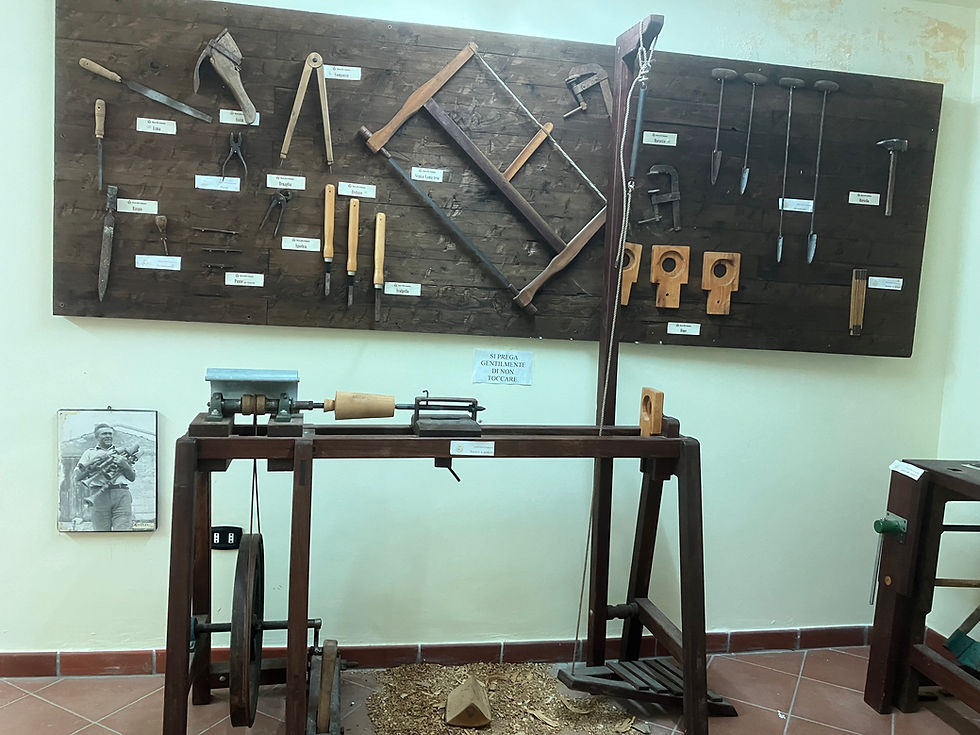Pietrabbondante
- Antonio Forte
- Aug 17, 2023
- 3 min read
Lots of rocks. Well, an abundance of. Pietra meaning rock or stone, and abbondante meaning abundance. Italian is quite a melodious language in its use of contractions and syncope. When one word ends in a vowel and the next begins with one (especially the same vowel), it is common to drop one and connect the two words [i.e. "lotsarocks" or "forgettaboutit" etc.]. Pietrabbondante is an important cultural and archeological center for my current work, and is one destination that I was truly itching to see. On my final day in Scapoli I woke early, packed, had a wonderful caffe at the local bar, wherein I misspoke to the barista: making a mistake I remember making many-a-time, years ago in high school Italian class. I told the barista, penso che faccia nave oggi, which means "I think it will boat today." Neve is snow. The word for rain is actually pioggia. She did not correct me or laugh. She introduced herself as Monica. I said, ah, come mia sorella, ma il suo nome è più francese: Monique. (Ah, like my sister, but her name is more French: Monique). After a bit I thanked her for the coffee and conversation, and made my way down the narrow, windy mountain roads. It was the first day to check-in to the artist residency at the Museum of Loss and Renewal in Collemacchia. I had roused myself early enough to visit Pietrabbondante before beginning my residency. This was only my third day in Italy...
[Caption: In and around the theatre complex at Pietrabbondante.]
The view of the landscape around Pietrabbondante is an incredible one. The ancient ruins date back to around the 4th century BCE, and were originally constructed as a theatre/sanctuary complex by the Samnite people. The wealth and power of this pre-Roman culture was poured into the building and decoration of this enormous facility overlooking the mountains of Samnium, what is now modern Molise. The language used by the Samnites is called Oscan, and there have been several inscriptions discovered at Pietrabbondante. The pictures of this place in the books I have been reading and referencing have been great, but absolutely nothing prepared me for the sheer awe imparted by being there in person.
Much of the culture surrounding the Samnites seems to have been lost to the mists of time and to their neighbors: the assimilating, hegemonic, and eventually genocidal Romans. They were a fearsome, prolific, and multifaceted people, the Samnites; and for a brief period in history (several centuries, in fact), played interesting roles as both important allies and enemies of ancient Rome. The Samnites were known for their dry stone walls, utilizing polygonal masonry, building vertically as to allow the walls to strengthen as they settled over time. Compare this with modern brick walls which are built horizontally. I started to make sketches of certain spots in the polygonal structures, and will being transcribing the shapes into rotating, repeating musical cells (superimposing the outline of the polygons onto the circle of 5ths, relative minors, chromatic, etc.). I spent several hours here, wandering around in the sunshine of Samnium, and finding a place to sit in the shade to sketch bits of the stone walls and translate an inscription into my notebook...a few names of important Samnites and a dedication for a victory. See if you can make it out (see picture below). Hint: Oscan is written right-to-left.
[Caption: The dry polygonal stone walls of Pietrabbondante. I was late to the show by several millennia, but my seats were good. Ornate carvings by the Samnites. Forte's Bar, en route from Pietrabbondante to Collemacchia.]
Stay tuned for the next post. A deep dive into residency ensues.



















































Oh yes! This is fantastic and totally Antonio!
Indelible...infinity incredible. I am awestruck - the sense of time dissolves here in your photos and writing.
When you arrive home, you can design and assist in constructing a new stone wall using what you have learned. Just embarked on a quick search and found an interesting article: “A new method for the energetics analysis of polygonal masonry in Samnite hillforts (Italy)”